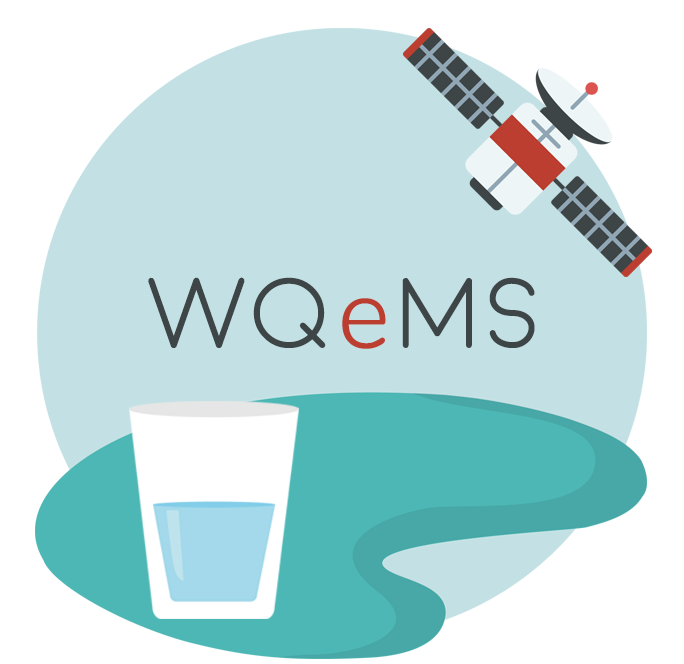Validation of automated station data from 2022
Validation of automated station data from 2022
This page describes the validation results of the automated observations done by instruments at a monitoring station located in Lake Pien-Saimaa (South East Finland, see in Google Maps). See this page for more information about Tarkka+ and the services provided for Lake Pien-Saimaa. Details are also provided in this METADATA. The instruments were calibrated with observations made in 2021 and the main purpose of this validation is to check if the calibration factors are still accurate for observations made in 2022.
This work has been performed within the context of WQeMS project, which provided funding for improving the automated measurements and collection of additional water samples for validation and quality control of automated in situ and EO data flows.
Observations
The automated observation were made once per hour from 1 m depth with the following instruments:
Turbidity (NTU) – McVan NEP 950
Temperature, T (°C) – Ponsel OPTOD
Chlorophyll-a, Chl-a (µg/l) – Trio nanoFlu
Oxygen, O2 (mg/l) – Ponsel OPTOD
Phycocyanin (µg/l) – Trios nanoFlu blue
The sensors were installed on 13.5.2022, with the exception of temperature sensor which was on the platform the whole winter season. Cleaning of sensor heads was done with pressure air before every observation. However, due to a faulty pressure bottle, the air had run out sometime between the installation and June 6.
Platform owned by City of Lappeenranta. Data services by EHP
In 2022 the platform was visited by the personnel of SVSY on the following dates: June 6, June 17, July 4, July 15, August 1, August 22, September 1, and September 12. The main purposes of the visits were collection of water samples, manual cleaning of sensor heads and checking the status of the equipment.
The manual observations (analyzed by SVSY) included the following:
Turbidity FTU – Nephelometric (at a laboratory)
Chl-a (µg/l) – Spectrophotometric, ethanol (at a laboratory)
T (°C) – Thermometer (at the station)
The faulty pressure air bottle changed on July 4 and the new one performed well until the end of the measurement period.
Validation results
Chl-a
The next figure shows the overall comparison of automated and bottle sample values during the summer 2022 period. As can be seen there are large differences between the two datasets in June and early July. There is a peak of high values in mid-July. This was caused by a failure in the anchoring and the platform drifted to shore
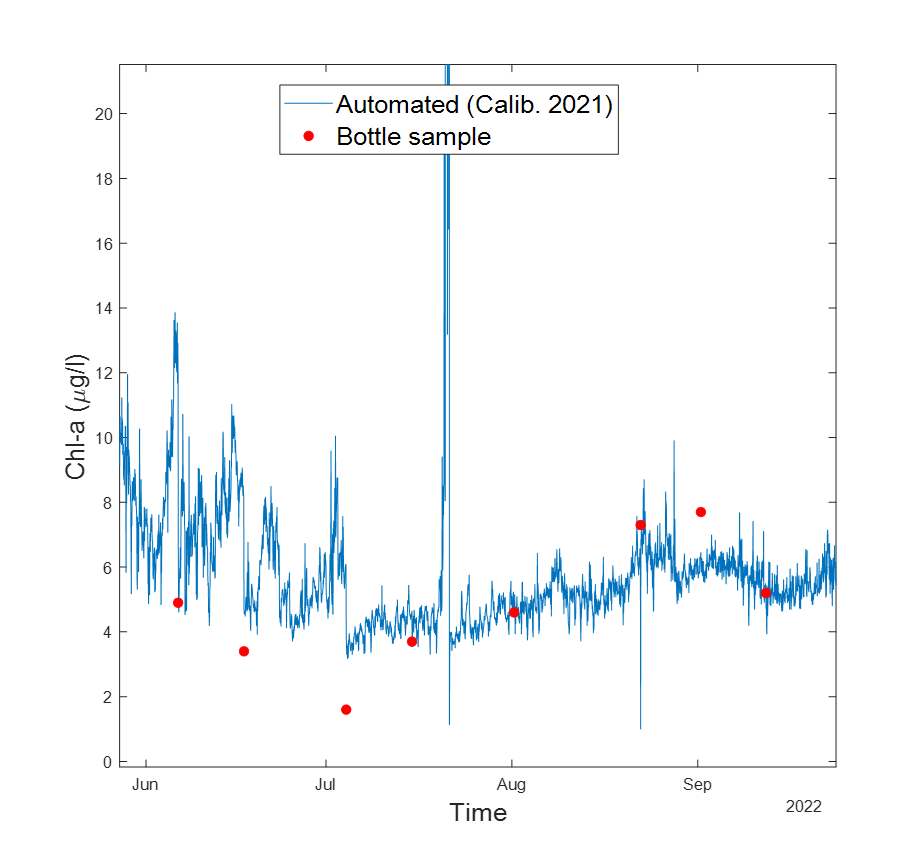
The following figures show the behavior of automated Chl-a observations close to the manual sample collection time. In the 1st three there is a clear drop in the values of automated observations after the manual sampling. This is due to the manual cleaning of the sensor heads. Without the automated pressure air cleaning biofouling increases the observed Chl-a values. After the installation of the new air bottle this effect disappears and the automated sensor values are very close to the lab sample values.
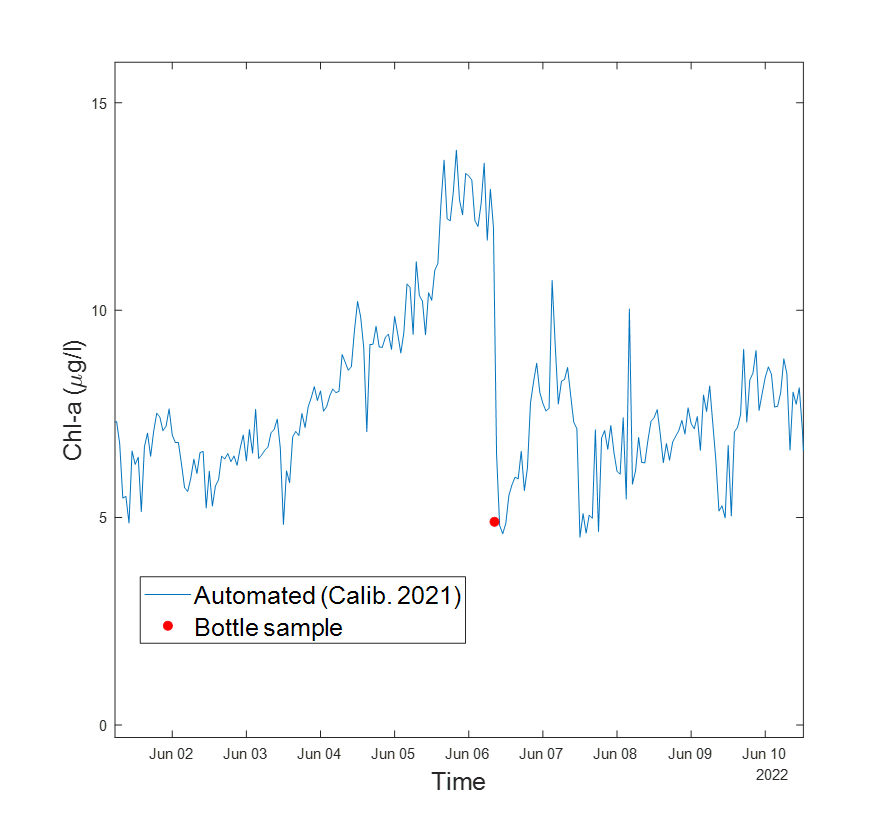
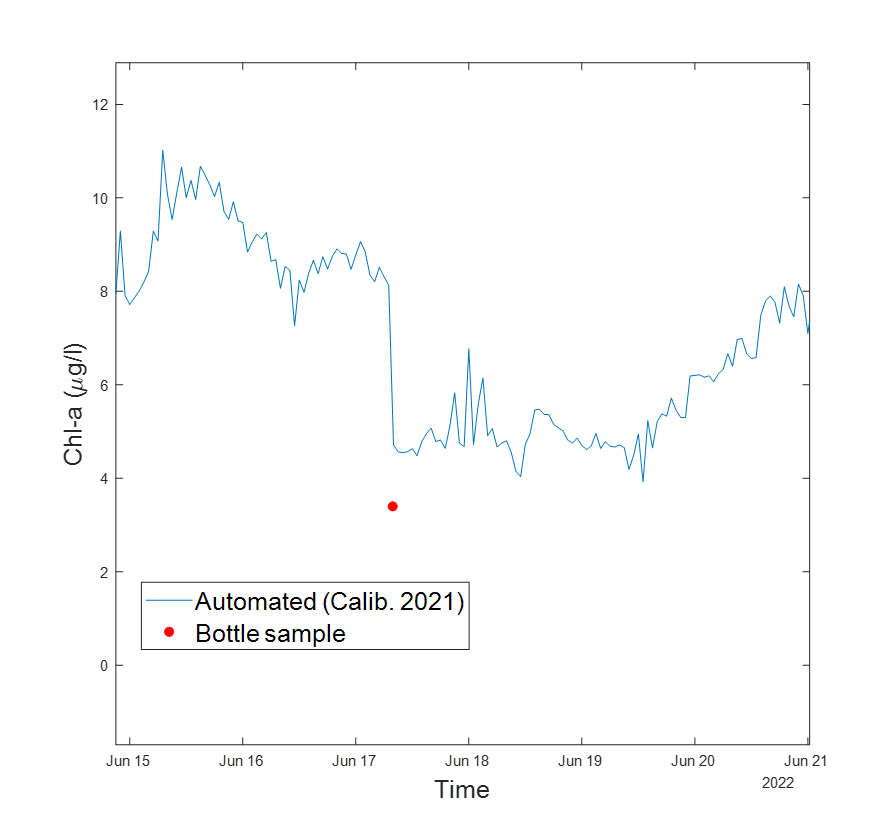
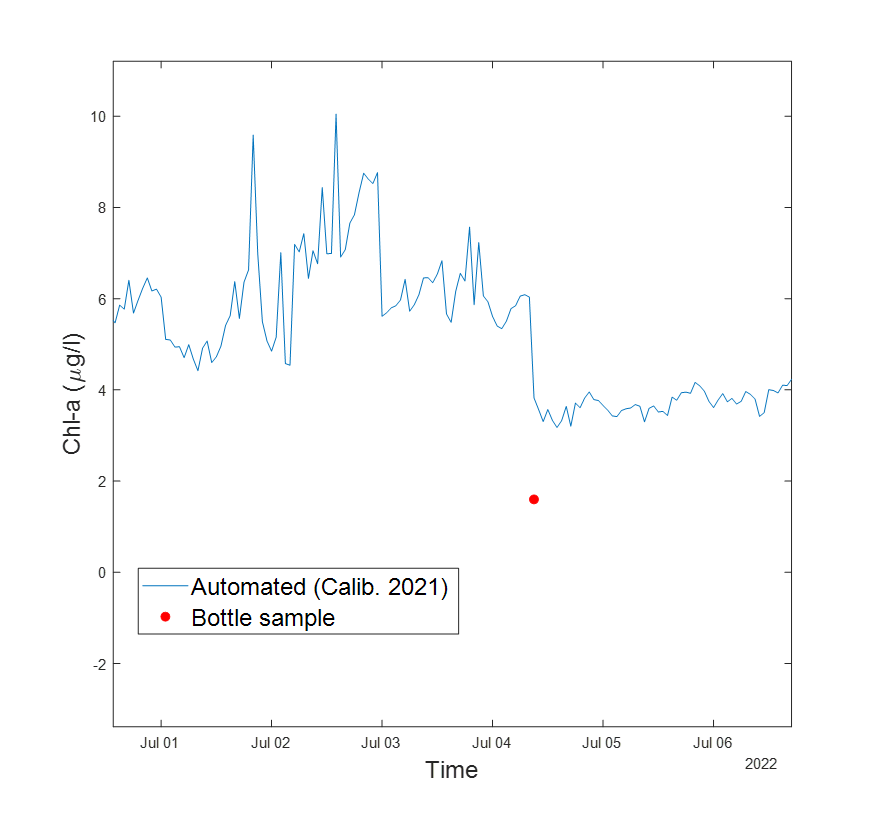
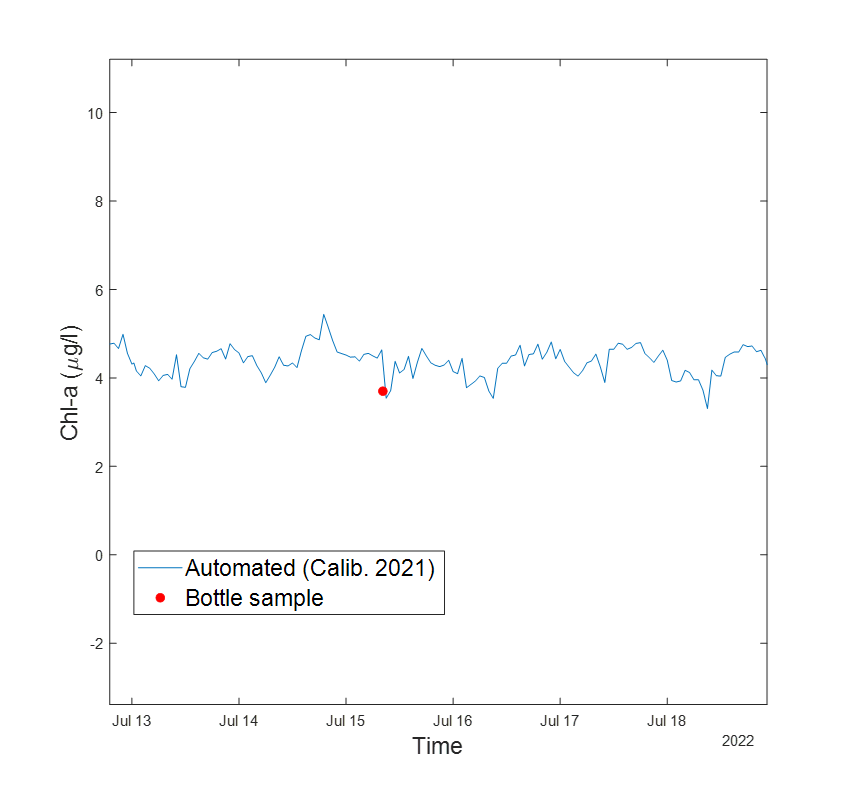
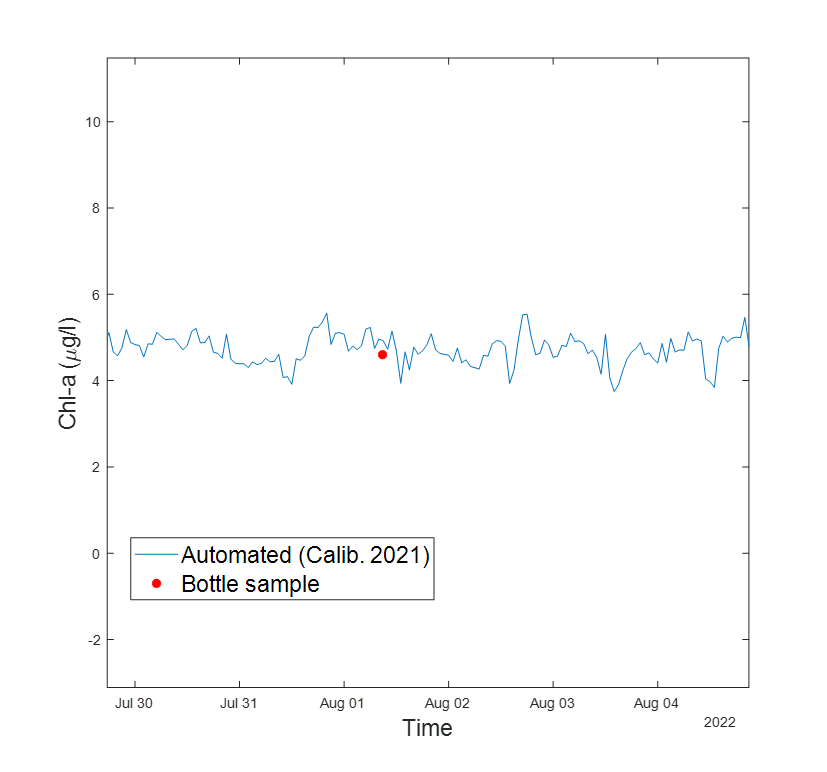
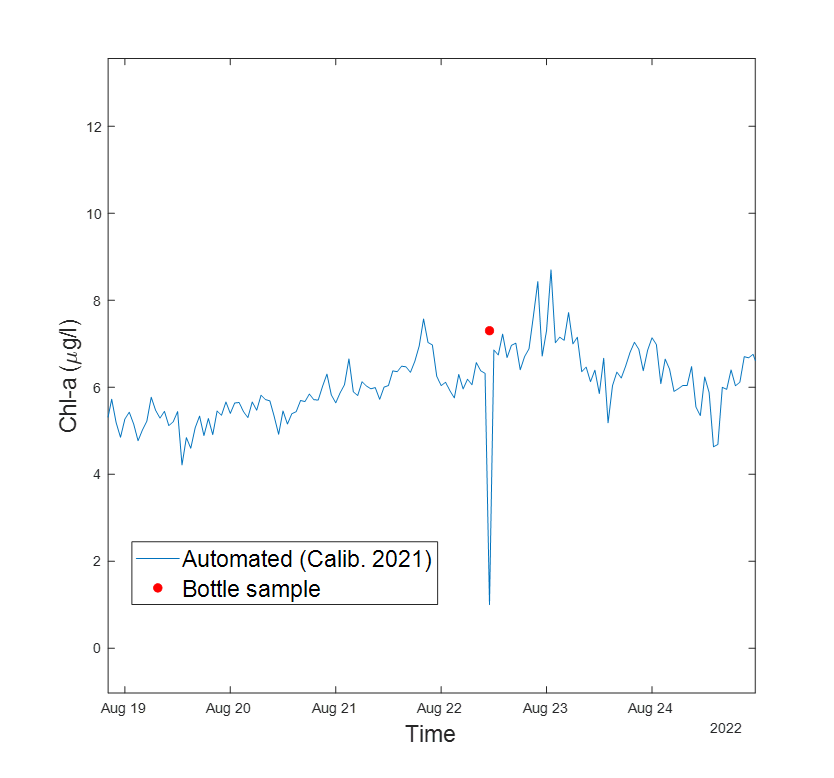
Turbidity
The next figure shows the behavior of automated turbidity observations. They follow the lab values (bottle samples) very well also during early summer, which indicates the observation is not sensitive to biofouling caused by the lack of automated pressure air cleaning. However, there are several peaks of very high values in the data. These are likely to be caused by particles or even small organisms being in the view of the sensor.
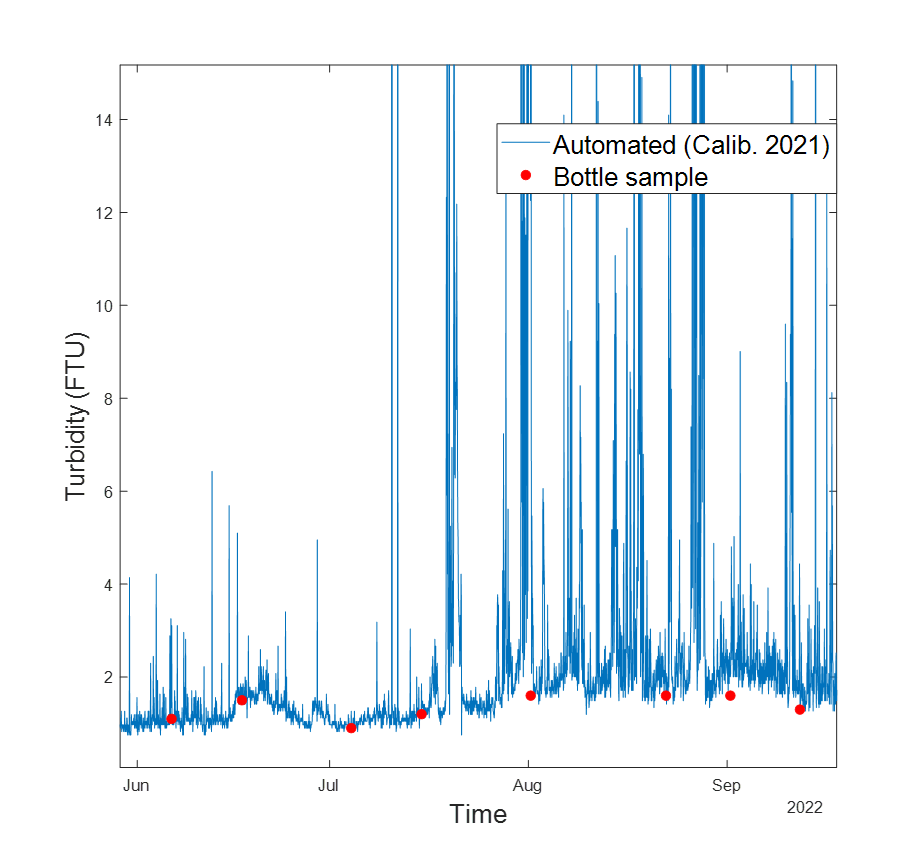
More detailed examples of the behavior of the automated turbidity values are shown below. The indicate more clearly that the correspondence of the datasets is good despite the random high values. Only in the early Aug case these is a large difference between the two observations.
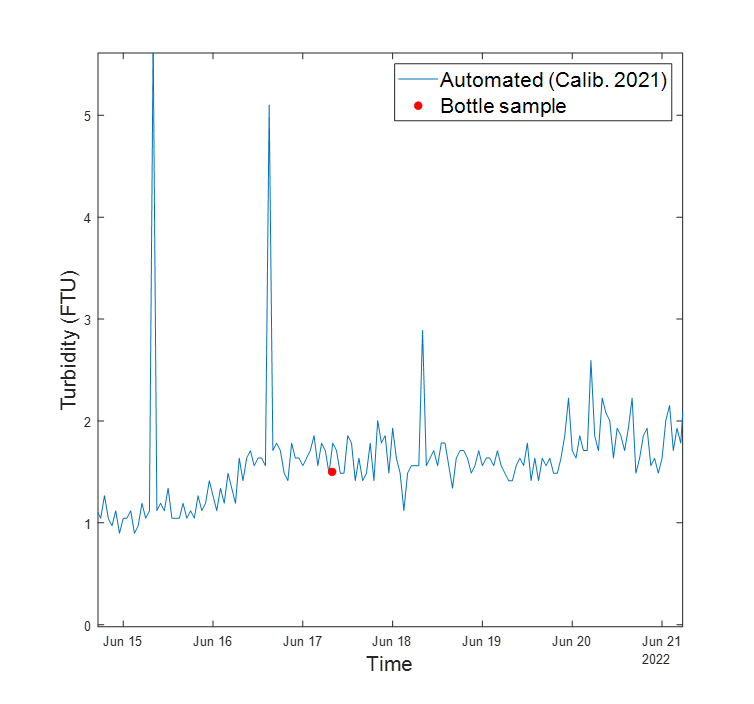
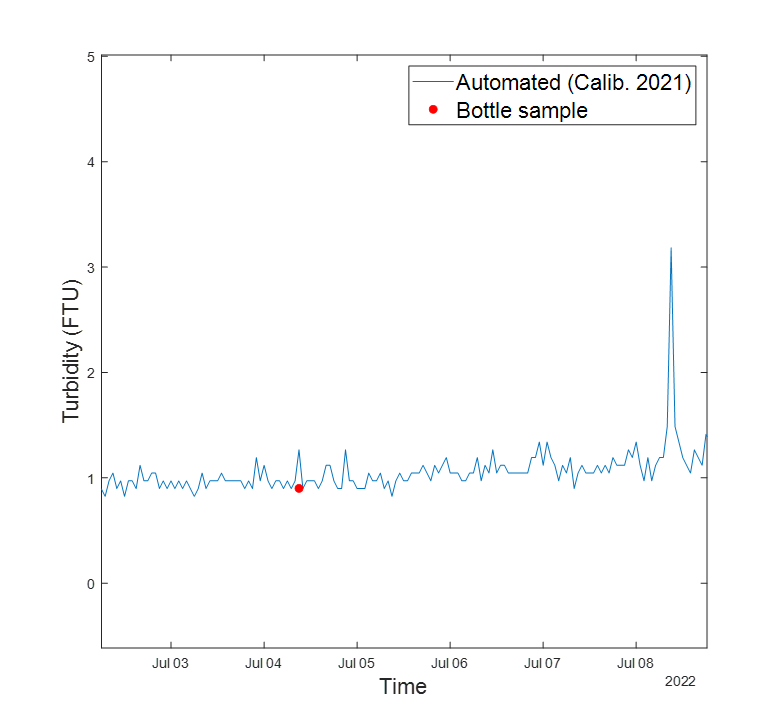
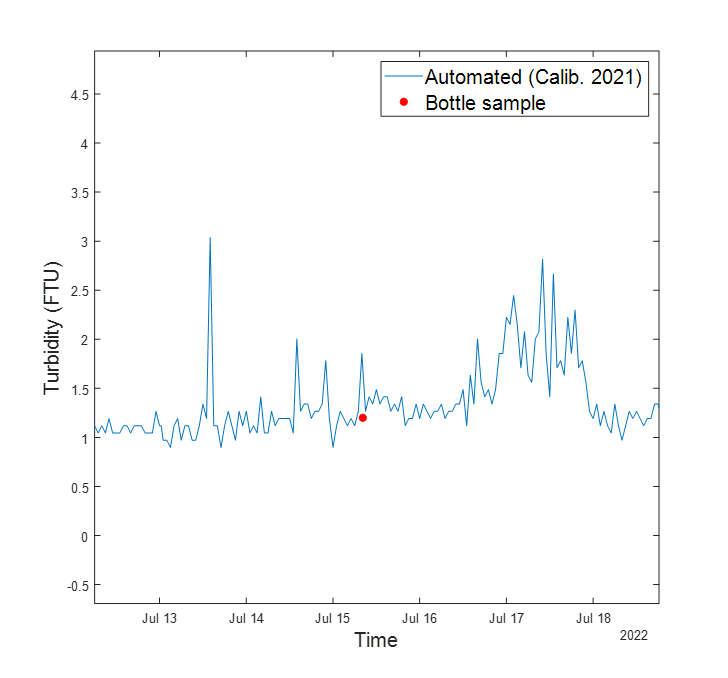
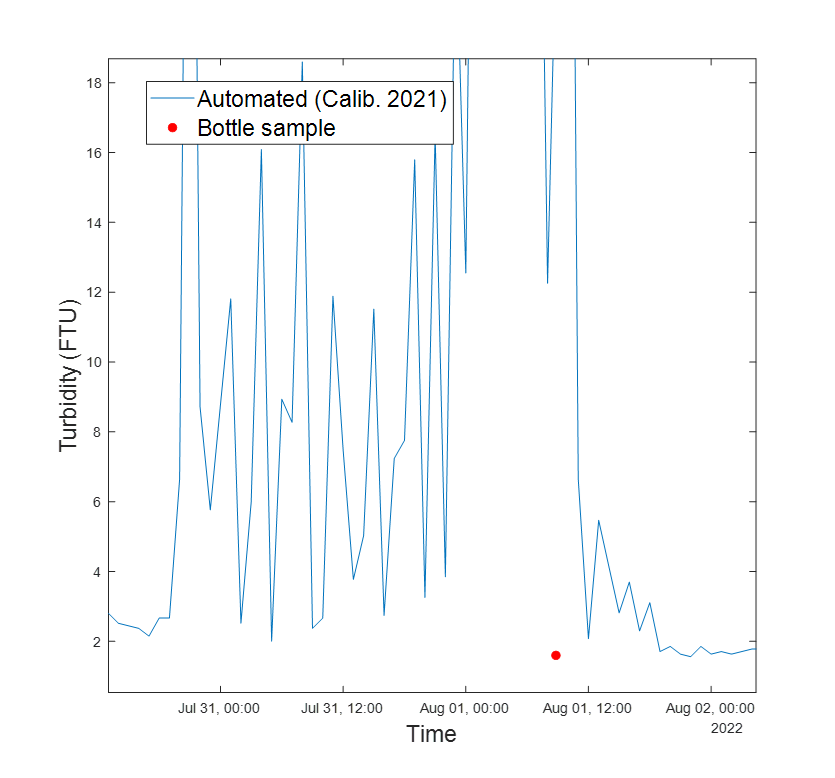
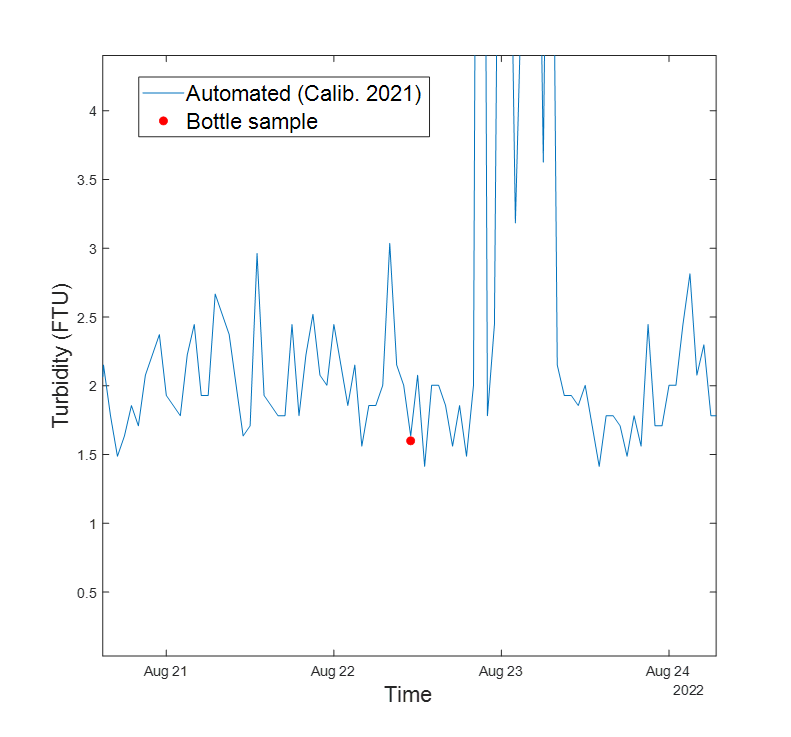
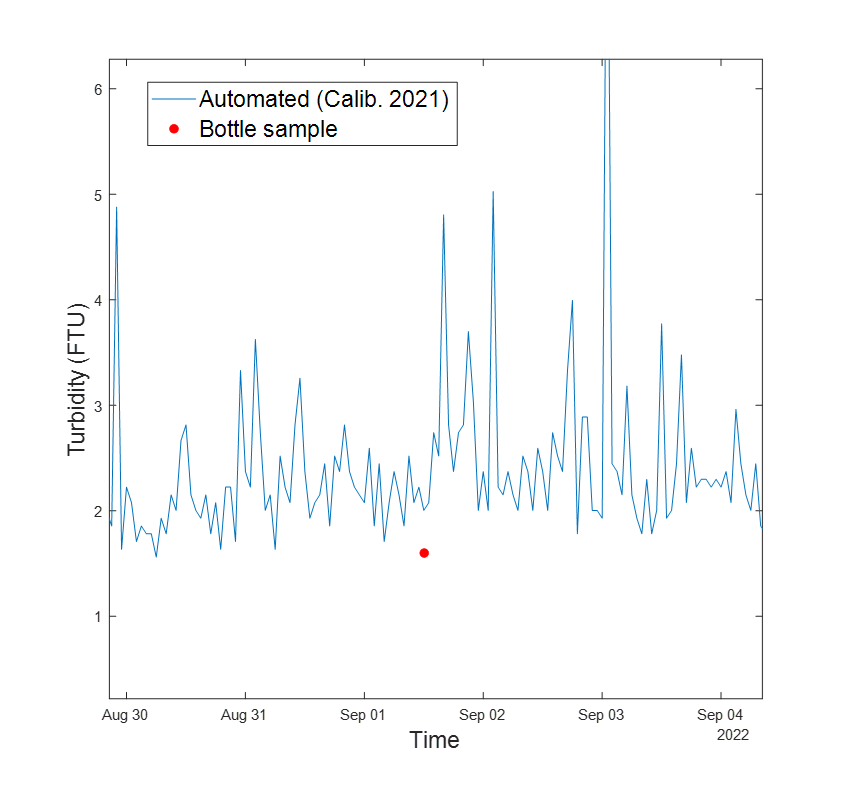
Temperature
The next figure shows the very good correspondence between automated data and manual observations.

Summary
According to the results the calibration factors of 2021 work well with 2022 data and no modifications are required.
Frequent cleaning of sensor heads is essential for quality control and the early summer Chl-a values include anomalies caused by biofouling due to the lack of proper automated (pressure air) cleaning. Thus, the quality of Chl-a data measured between May 13 and July 4, 2022 is low and the values should not be used.
Turbidity data is noisy especially in Aug and Sep, 2022. The cause for this is not known but is likely due to larger particles observed by the sensor. Still, the correspondence of the automated measurements with lab samples is good and low-pass filtering of the automated data may improve its usefulness.
Temperature data has very high quality and does not require any modifications or use restrictions.
No large-scale algal blooms were observed from these datasets during the summer period of 2022.
This project has received funding from the European Union’s Horizon 2020 Research and Innovation Action programme under Grant Agreement No 101004157.

